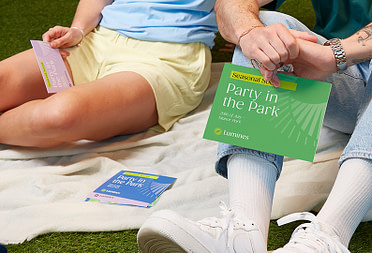7 tips for hiring and interviewing your first employee

When you’re new to interviewing candidates, there can be nerves on both sides of the table. Here’s how to get the best out of that crucial first conversation.
Whether you’re getting ready to hire your first employee or you’re taking on interviewing as part of a new job role, the first time can feel a little overwhelming. Fortunately, you can get off to a confident start with just a little forward planning.
1. Set your goals beforehand
An interview is a tiny window into another person’s professional life. When you’re peeking through it, you need to know what you’re looking for. You can’t really get to know that person in the space of an hour or less, so you need to focus on a few specific goals.
As well as the competency and experience side of things, which you should already have a sense of from their application and resume, you’re looking for the emotional and social factors, i.e. the stuff you can only really explore face to face.
Jot down a list of things you want to achieve, from the specific, like ‘find out about the project they did on x’ to the general, e.g. ‘feel sure if they would fit into the sales team’.
2. Warm up gently with resume-based questions
At this point you’ve already read up on the candidate, so you know roughly how their career has panned out so far. What an interview can help you to do is dig deeper into the areas you’re interested in and clear up any questions.
These kind of questions, such as ‘tell me more about your time in X role’ can be handy ice-breakers to start the interview off with and make you both feel more at ease with each other. By making them feel more comfortable, you’ll get the best out of them and make the interview as valuable as possible.
Background-based questions can help you gauge the person’s understanding of their current company’s business goals and how their work fits in, which will show you how strategic their thinking is and whether they’re commercially-minded. For example, ‘how does your work help your company stay ahead of the competition?’
Choose just two or three resume-based questions. That way you can avoid rehashing what you already know or covering areas that aren’t relevant to the role.
3. Align your questions to the job description
Your candidate has already read the job description and will (hopefully) have prepared some answers based on it.
As with the resume, your aim is not just to recap what’s already down on paper, but to dig deeper and sound out any potential gaps between their experience and what you need. For example:
‘We’re looking for x, and I noticed you don’t have any direct experience of that. Can you tell me how you’d approach that challenge?’
Talking about the job description can also be a good prompt for them to ask you any questions about the role.
‘What did you find most appealing about the job description? Are there any areas you’d like more information on?’
4. Consider competency-based questions
The competency-based question can be a useful tool, and thanks to its popularity your candidate may well have prepared some answers based on this format, too.
By asking ‘tell me about a time when…’ you’re getting them to not just tell you about their experience, but prove how they’ve used their abilities in a specific real-world situation similar to what pops up in your own business.
Competency-based questions can also help you delve into their personality and style of working – for example how well they operate as part of a team, whether they thrive under pressure, or if they prefer novel challenges vs. order and routine.
Some handy competency-based question structures:
- ‘Tell me about a time…’
- ‘Give me an example…’
- ‘What’s the most x situation you’ve ever been in?’
- ‘What was your biggest challenge during x role?’
From a candidate’s perspective, this type of question can be stressful to answer, so unless you want to really grill them, try mixing these up with other question styles.
5. Notice the non-verbal
You can take it as a given that there will be some nerves flying around, so your candidate’s body language won’t necessarily be in their normal range. However, it’s worth looking out for things like:
- Eye contact – are they making it? This is really important, especially if the role involves dealing with customers or suppliers.
- They look relaxed but engaged – open body language – and leaning in slightly too – is a really positive sign that your candidate is keen and actively listening
- Taking notes – is your interviewee scribbling away? This shows that they value the information you’re giving them and are genuinely interested.
As The Balance points out, this kind of observation isn’t limited to the interview room. The reception staff, or whoever greets the candidate when they come in, can also note how the candidate comes across. Are they smiley and friendly when they sign in?
6. Keep an open mind
Although it’s important to listen to your gut, the decisions you make about employing someone have to be about more than a personal preference. You’re interviewing on behalf of your company, so it’s important to stay objective and focused on what they can offer the business.
As Talentlens explains, we have certain innate biases when we meet people, and first impressions made on an emotional or subconscious basis can skew the whole interview. That’s why it’s a really good idea to invite your candidate back for another chat with someone else after a positive first round.
7. Make sure it’s a culture fit
While your company may be in the early stages of growth, it’s important to start thinking about what your company culture will be. Will your first employer mesh well with others as you grow? Do they fit in with the brand values you’ve put in place?
Save your competency questions for the first round interview, which should determine if the the candidate is right for the job. If all goes well, then schedule a second round interview specifically for a culture interview. This could be an informal setting where you just chat with the candidate about their interests outside of work or what their sense of humor is like, for example. When people feel more comfortable in the interview process, it can give you a better indication of how they will fit in once they join your team.
Once you’ve found your perfect match, why not welcome them to the gang with an amazing onboarding experience?
Keep in touch
Get design inspiration, business tips and special offers straight to your inbox with our MOOsletter, out every two weeks.










